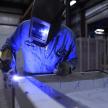
27th
Clearing the Air: A case study on managing the risk of lead dust
By Paul Clarkson, Principal Consultant
A property owner had been managing the risk of exposure to lead through a workplace protocol known as a lead dust management plan (LDMP). The contaminated dust was in ceiling cavities and there was potential for various contractors to encounter the dust during general maintenance activities. The owner was concerned about the effectiveness of this LDMP and faced the prospect of a costly and disruptive remediation project.
QED Environmental Services (QED) was commissioned to conduct a desktop risk assessment involving the review of previous sampling reports. As you will read, QED determined that adopting a site specific approach to the issue resulted in an in-depth understanding of the relative risk of exposure to lead and was able to suggest critical controls. This also fruited secondary benefits of significant cost savings for the client, by adopting a staged risk assessment regime and resisting a large disruptive, and ultimately inconclusive, remediation project.
>> Download the whitepaper: Clearing the Air: A case study on managing the risk of lead dust
Categories
Recent Posts
Changes to the workplace exposure standard for welding fumes
15th Mar
On January 18, 2024, SafeWork Australia made a significant adjustment to the Workplace Exposure Standard (WES) for Welding Fume (not otherwi...
Pseudomonas aeruginosa and the Water Quality Management Plan - it's not just about Legionella.
23rd Feb
Pseudomonas aeruginosa could be responsible for a high burden of disease, and should always be included in a risk management plan....
Navigating the New Norm: Prioritising Indoor Air Quality for Events and Venues
06th Feb
Throughout 2023 there was a surge in venue managers looking to help clients feel at ease in regards to indoor air quality....

















